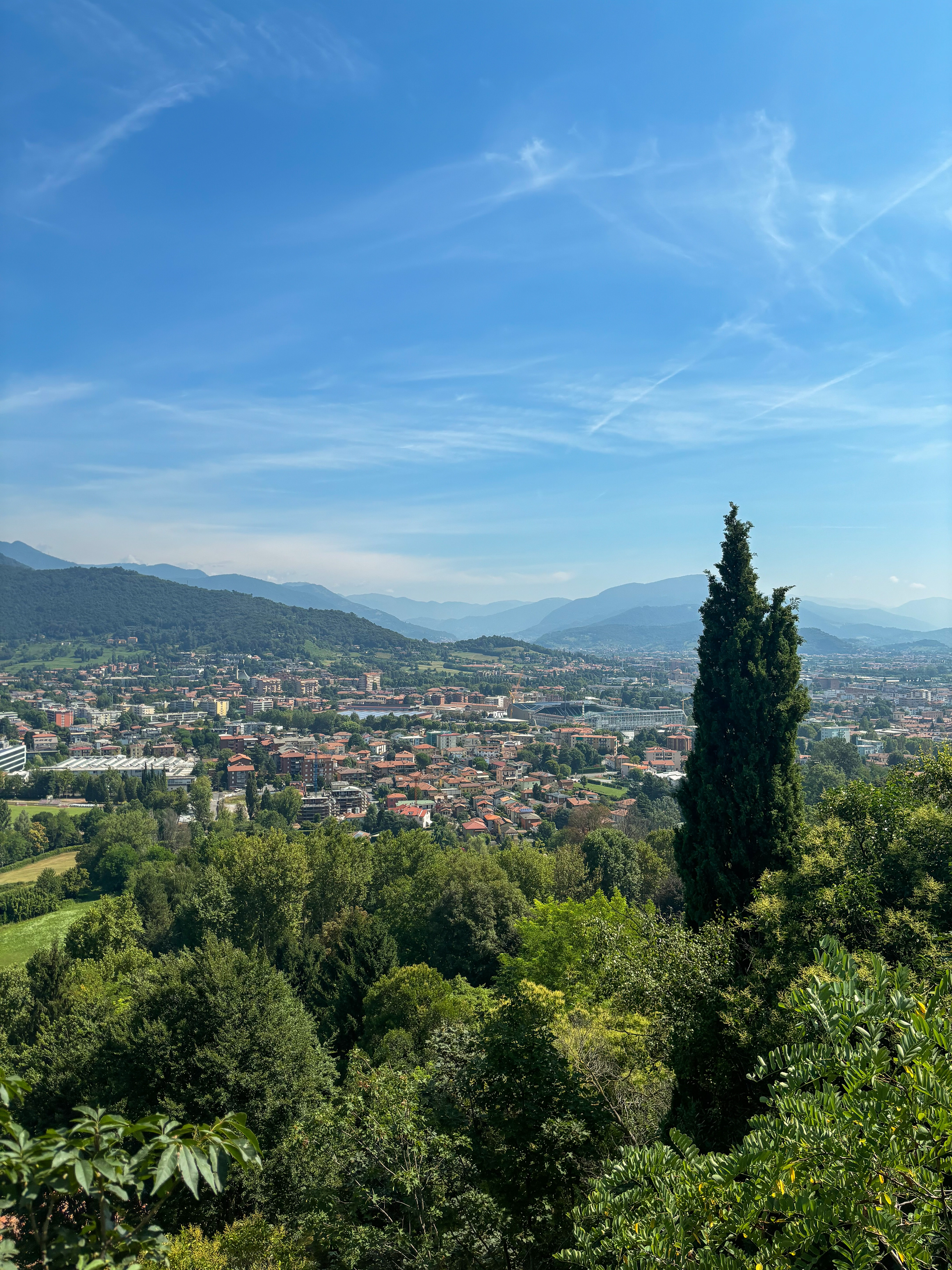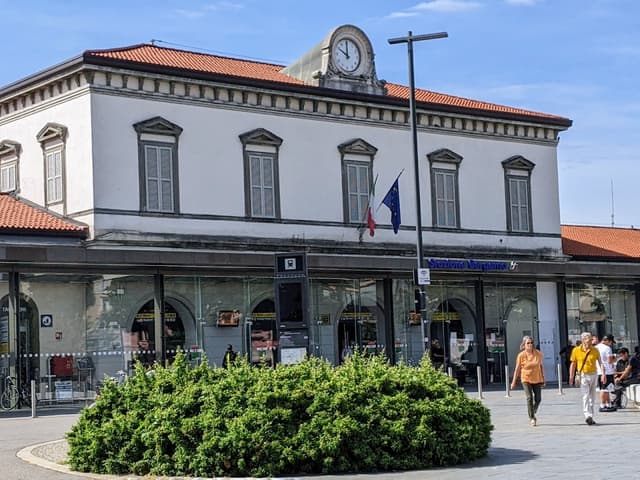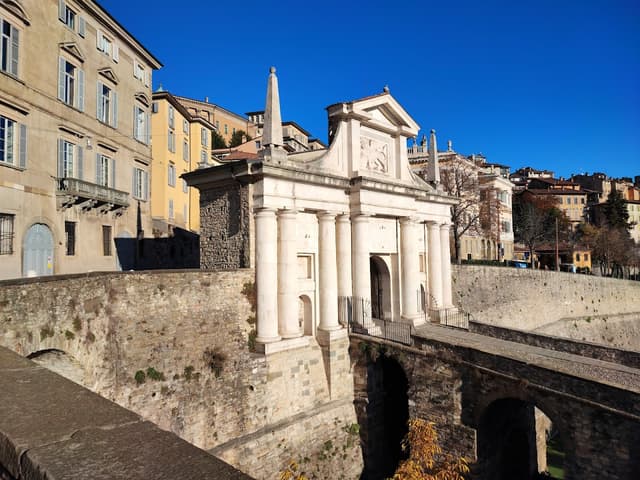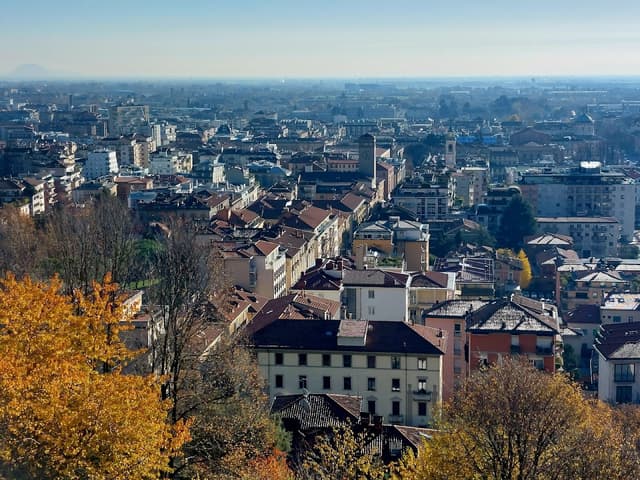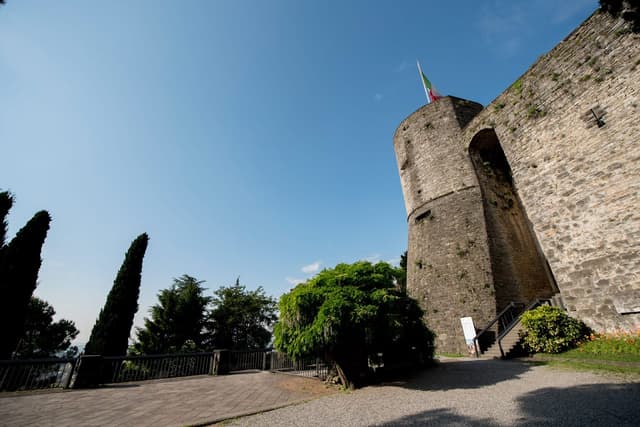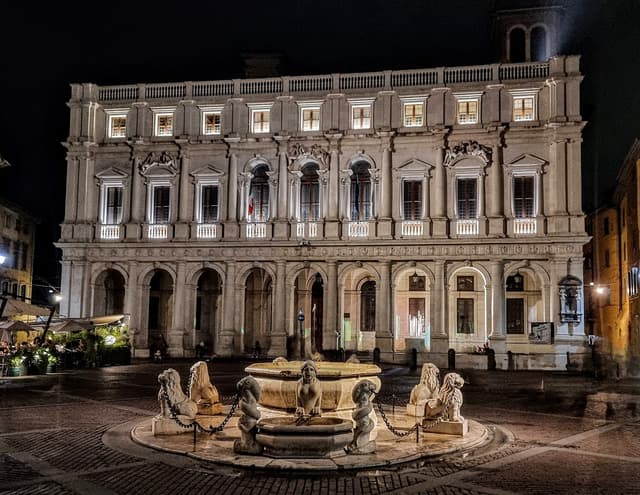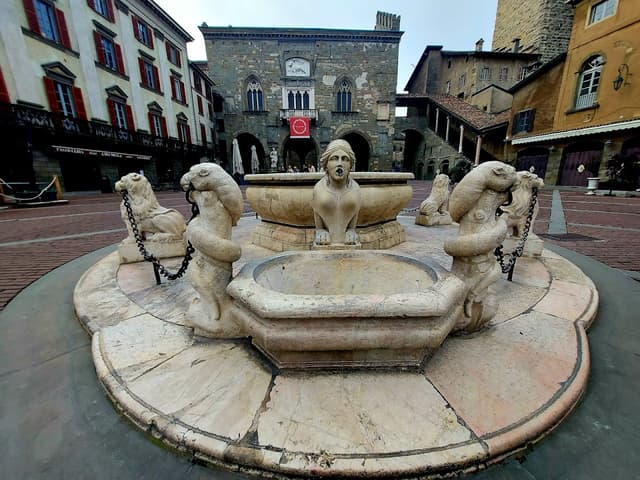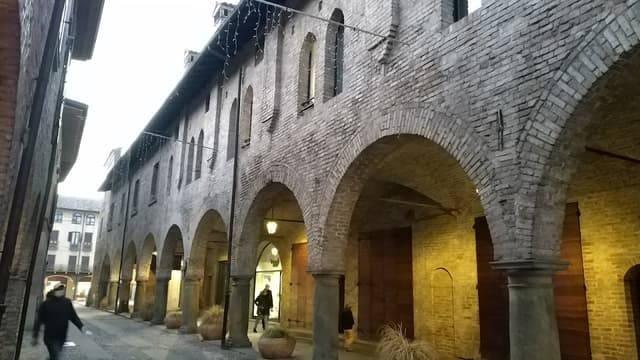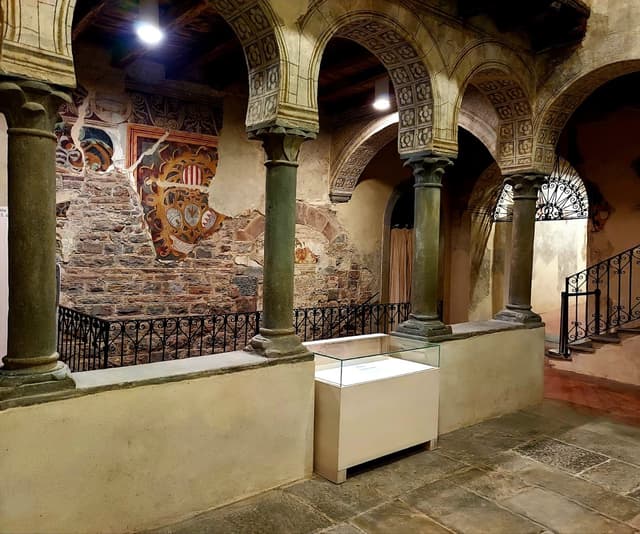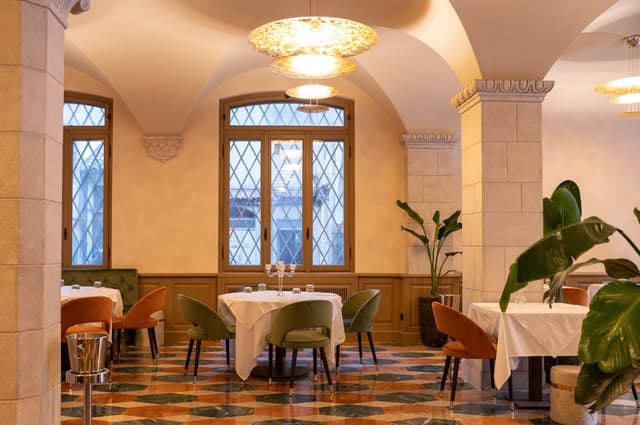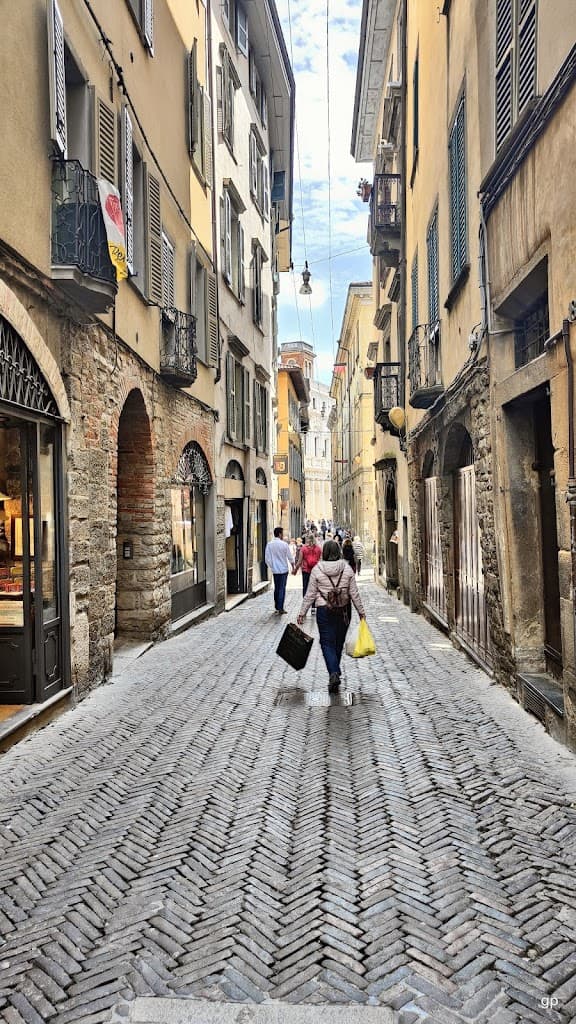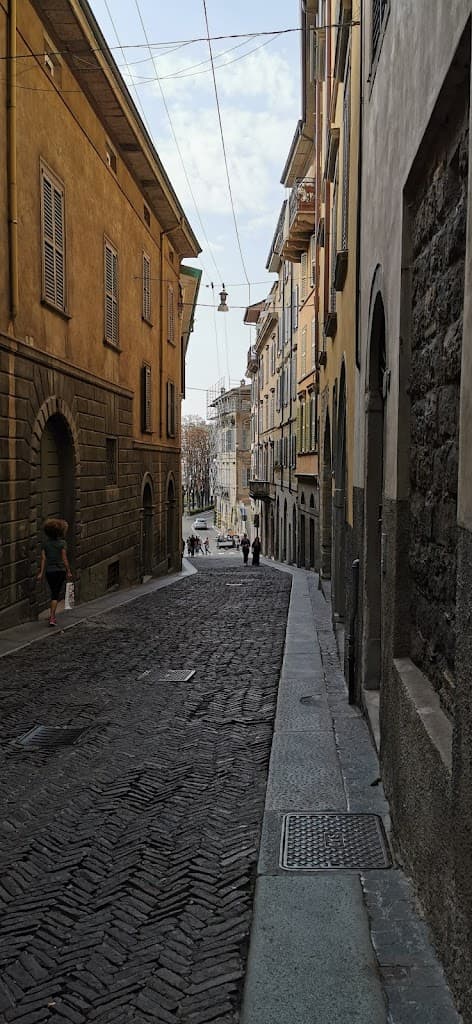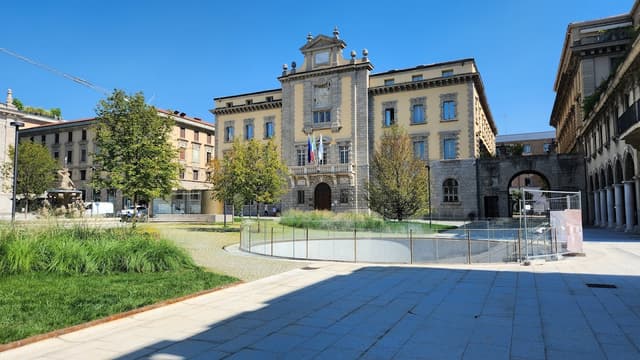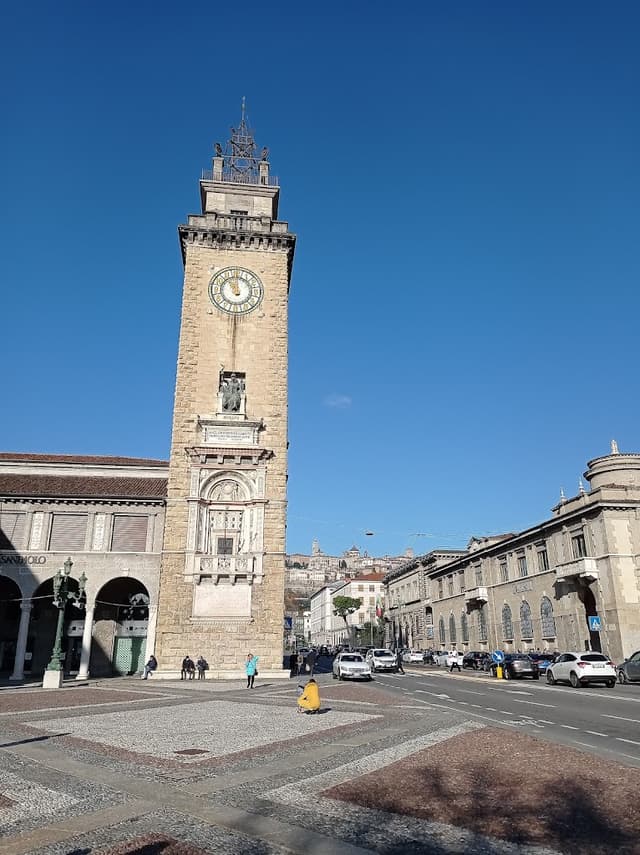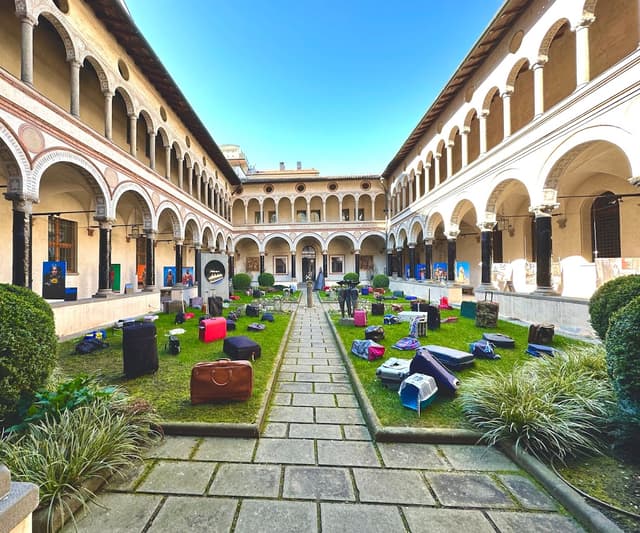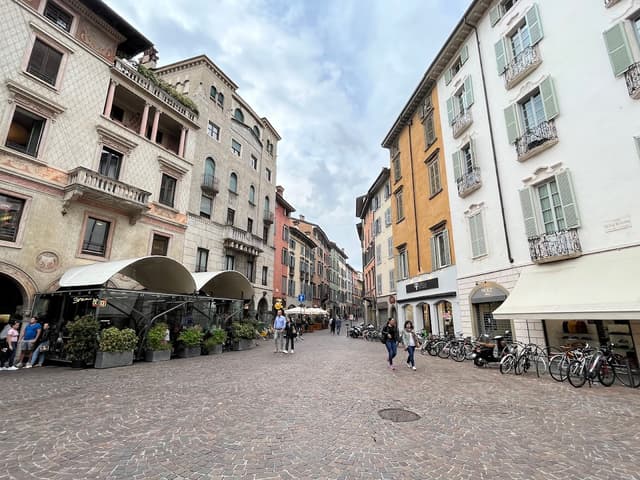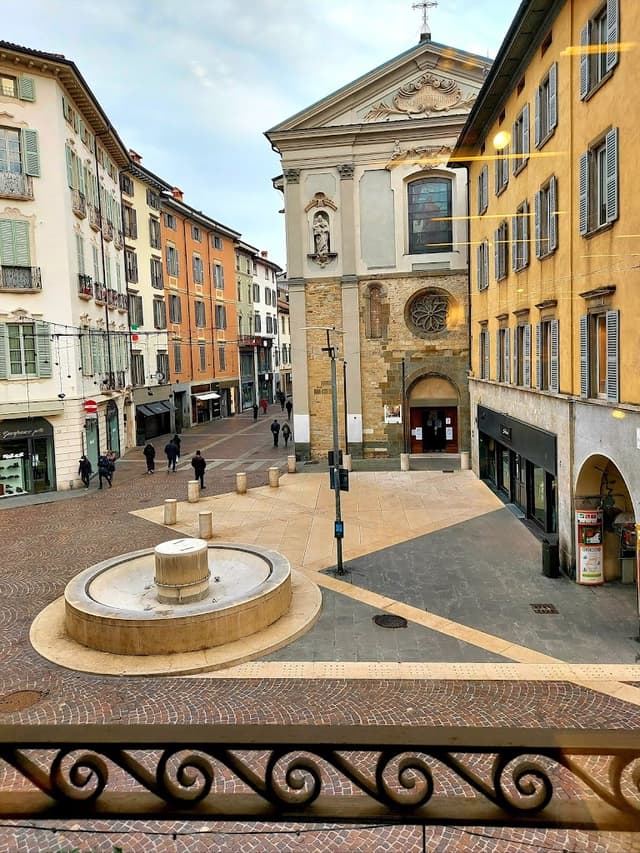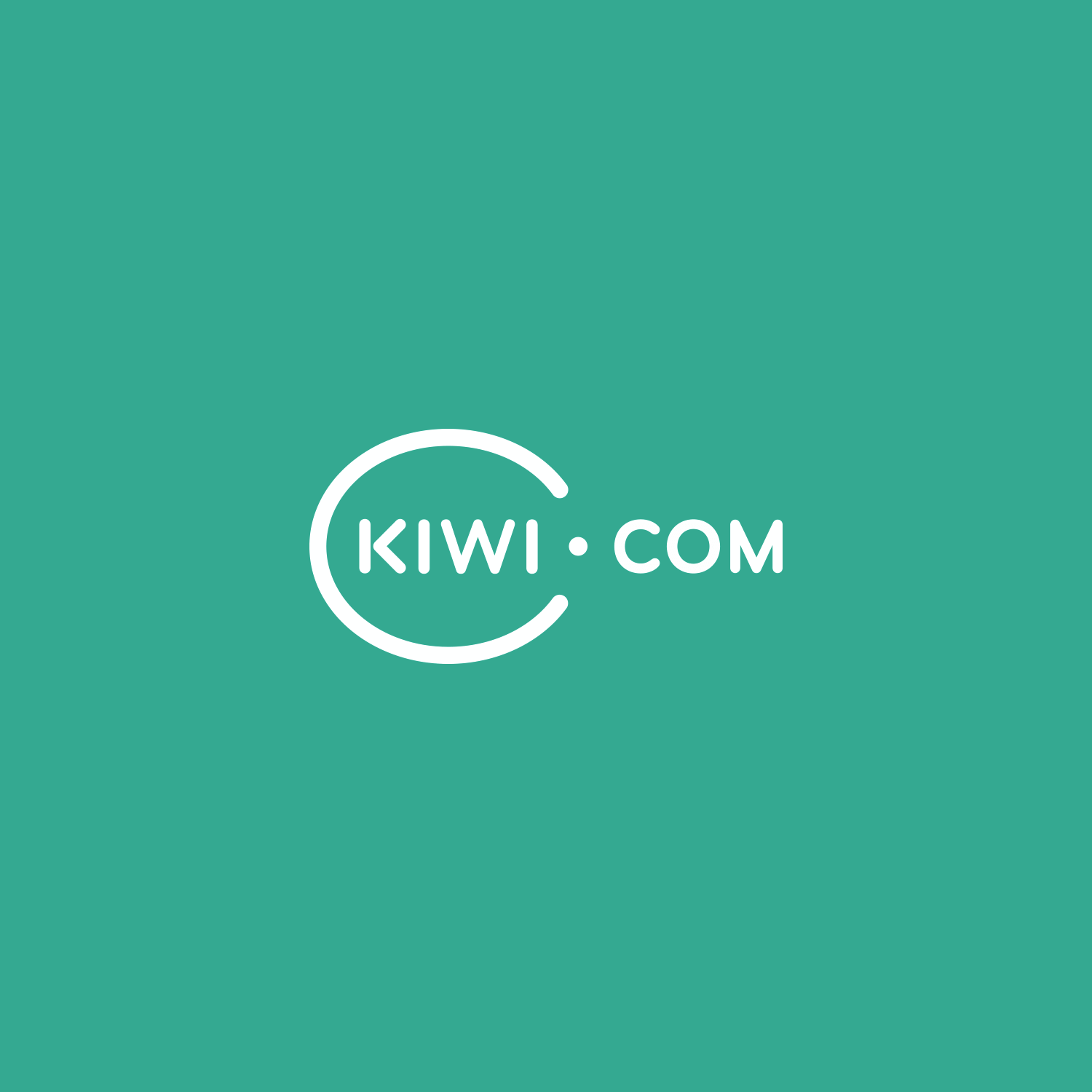Table of contents:
1. Basics
2. Arrival
3. Breakfast
4. The Upper Town
5. The Lower Town
6. Conclusion
1. Basics
Country: Italy
City: Bergamo
Currency: Euro
Language: Italian
2. Arrival
A. Bus
I arrived in Bergamo by FlixBus from Milan. It was about an hour ride. FlixBus has a well-built connection web in Italy and in Europe in general; I recommend checking if there is a direct bus from your place.
Bergamo
@vikollia
You have to buy the FlixBus ticket in advance.

Details
B. Plane
Despite its proximity to Milan, Bergamo has its own airport. If you’re traveling from a more distant location, consider checking flight options on the sites listed below and purchasing tickets directly from the airline’s website to avoid additional booking fees.
Milan Bergamo Airport
@vikollia
The airport is situated approximately 7 kilometers from the center of Bergamo. Fortunately, there is a direct FlixBus service that connects the airport with the central bus station, providing a convenient transfer.

Details
C. Train
Directly next to the main bus station, Bergamo has its own train station, providing direct connections from Milan and other destinations.
Bergamo railway station
@vikollia
Tickets can be purchased on the spot, however you should buy them in advance as they are usually fully booked.

Details
D. Car
Central Parking
@vikollia
The Central Parking is conveniently located near all the key attractions you plan to visit for the day—if you’re fortunate enough to secure a parking spot.

Details
3. Breakfast
For breakfast, I highly recommend La Nina, a charming spot near the central bus station. This restaurant, bar, and pizzeria offers a diverse menu, from hearty breakfast options like scrambled eggs (my personal choice) to delicious pizzas and pastries.
La Nina
@vikollia
The history of the place can be found on the site of the Restaurant:
"On September 1, 2022, we opened our first restaurant in Viale Papa Giovanni XXIII, renamed "La Nina": a diminutive of the historic Bergamo restaurant La Marianna which has been involved in pastry and catering for more than 70 years.
Marianna products, including the iconic stracciatella, the ice cream symbol of Bergamo invented by Enrico Panattoni in 1961.
And it is thanks to the success received that in December 2023 we acquired the second restaurant, La Nina Centro, located in the city center, near the Court of Bergamo."
Keep in mind place called La Marianna, we will go there later!

Details
4. The Upper Town
Città Alta, or the Upper Town, is the historic heart of Bergamo, home to many of its most intriguing sights. Your exploration will begin here, with the journey spanning both the Upper and Lower Towns.
I. Via Scalita della Scaletta
Ascend the stairs that lead to the enchanting Città Alta. If you're visiting Italy during the summer, be sure to bring a hat and plenty of water to stay comfortable and hydrated!
Via Salita della Scaletta
@vikollia
As you ascend the steps, you'll begin to notice the evolving architecture, offering a glimpse into the rich history ahead. Relish the cool shade while it lasts, for these stairs will soon guide you to the historic gateway of the old city, where centuries of stories await.

Details
II. Porta San Giacomo
Our first stop in Città Alta is the iconic Porta San Giacomo, the historic gateway to the old city. As you approach this impressive entrance, the path provides breathtaking views of the lower town, making the ascent an unforgettable experience.
Porta San Giacomo
@vikollia
The gate takes its name from the nearby church of Santo Stefano, which was demolished to make way for the city walls. The pinkish-white marble façade, designed by Buonaiuto Lorini in the Tuscan style of Vignola, features arches divided by columns and is topped with two side pinnacles. The central emblem displays the winged lion of St. Mark. Facing outward, this design symbolised the city's openness and grandeur, with the walls serving both defence and display. Originally planned for a higher location near the shoe market, Lorini relocated the gate due to structural challenges. The older, smaller San Giacomo gate, closer to the wall's bulwark, was still documented in 1565.

Details
III. Viale delle Mura
Since 9 July 2017, the Venetian walls have become part of UNESCO, as a world heritage site.
Viale delle Mura
@vikollia
The Venetian walls of Bergamo, an impressive architectural structure from the 16th century, have remained well-preserved due to the lack of war damage over the centuries. The walls consist of 14 bastions, 2 levels, 32 sentry boxes (only one of which still exists), 100 gun openings, 2 powder magazines, and 4 gates.

Details
From the Venetian walls of Bergamo, you can enjoy a stunning view of the Lower Town set against the backdrop of the Alps.
IV. Rocca di Bergamo
Stroll along Via Porta Dipinta until you reach Piazza Mercato delle Scarpe, then turn right onto Via Alla Rocca. This charming route will lead you to our next destination, the Rocca di Bergamo.
The Rocca di Bergamo is situated in the upper part of the city on the Sant'Eufemia hill, offering wide views of the lower city and surrounding plain to the south, and the Orobie mountains to the north. The Nineteenth Century Museum, located within the Rocca, is part of the "Museum of the Stories of Bergamo" network, managed by the "Bergamo nella Storia" foundation.
Rocca di Bergamo
@vikollia
Construction of the fortress began in 1331, the same year Bergamo was gifted to the King of Bohemia. It was likely built on the remains of an earlier Roman fort. Under the supervision of William of Castelbarco, the king’s vicar, the project continued until John of Luxembourg's brief 20-month rule ended. The Visconti then took over, with Azzone Visconti completing the fortress in 1336. The Visconti enhanced its defences, using the castle not only to protect against external threats but also as a tool to suppress internal uprisings and maintain control over the region.

Details
If I had to highlight just one reason to visit Bergamo, it would undoubtedly be the breathtaking views. They are simply unmatched.
This spot requires no entry fee to explore the exterior of the fortress. You can walk around, taking in the stunning views on both sides of the city. The photo below showcases the part of the city we'll be exploring next.
V. Torre del Gombito
On your way back from the Rocca di Bergamo, I recommend strolling down Via Gombito. This charming street is lined with local shops and souvenir stands, where you can find everything from clothes to gourmet treats and more.
On your way, you will encounter Torre del Gombito.
Torre del Gombito
@vikollia
The 13th-century tower, standing at 51.6 meters tall (originally 64 meters), is in excellent condition despite part of it being demolished in the 19th century for safety reasons. Constructed from sandstone blocks in Romanesque style, it was once part of a single structure with the adjacent house, which features later Gothic modifications. The two were connected by a single access point, now sealed, located eight meters above the ground. The tower has few openings and narrow slits, typical of mediaeval defensive architecture.

Details
VI. Piazza Vecchia
Via Gombito street will also lead to the Piazza Vecchia. The square, located in the heart of Bergamo's upper city within the Venetian walls, is a nearly perfect rectangle and has been the political centre of the city for centuries. After public offices moved to the lower city to better serve citizens, the square became a popular tourist spot and home to museums. On the right is the Angelo Mai Library, housing over 600 volumes and several foundations. On the left are the Palazzo della Ragione, with the Sala delle Truciate hosting art exhibitions, the Palazzo del Podestà with a historical museum, and the Campanone.
Palazzo Nuovo
@vikollia
The Palazzo Nuovo in Bergamo, home to the Angelo Mai Civic Library, is located in the upper city on the northeastern side of Piazza Vecchia, serving as a striking backdrop. Originally designed by architect Vincenzo Scamozzi in the early 17th century to house the municipality, it was only completed in 1958 with the addition of six statues by Tobia Vescovi on the façade. The façade features two levels: a ground floor with loggia arches and an upper floor with nine windows behind a balustrade. Doric columns frame both the windows and arches, and the structure is topped by a mezzanine and crowning balustrade.

Details
Fontana Contarini
@vikollia
The fountain, made from Zandobbio marble, features a central octagonal basin with a water jet. It is surrounded by symmetrically arranged statues, including two sphinxes facing opposite directions—one toward Palazzo della Ragione and the other toward the civic library. At the base of the sphinxes are small basins collecting water from their mouths, which is drinkable. Flanking each basin are two small columns adorned with carvings of snakes and lions. Additionally, on the unfurnished sides, two lion statues, symbols of the Serenissima, are placed at equal distances.

Details
Palazzo della Ragione
@vikollia
The palace was constructed between 1182 and 1198, during the rise of municipal entities within the Holy Roman Empire. Bergamo followed this trend, with the building being referred to as Palatium Comunis Pergami in a 1199 document, making it the second-oldest Italian town hall after Rome's Palazzo Senatorio. Originally, its main facade faced the Basilica of Santa Maria Maggiore, but in 1462–63, the Serenissima had the ground-floor arches opened to Piazza Vecchia (then Piazza Nuova), and Gothic windows were added. The staircase to the entrance and loggia, connecting to Palazzo dei Giuristi, was completed in 1457. In 1464, a gilded Lion of St. Mark was placed on the new facade. Like many mediaeval Italian municipal buildings, the palace's ground floor features a portico open on three sides, with pointed and round arches supported by Romanesque pillars, adorned with zoomorphic and anthropomorphic carvings.

Details
Palazzo del Podestà
@vikollia
Built in the 12th century by the Suardi family of the Ghibelline faction, the palace, known in notarial deeds as Palazzo ex Zentilino Suardo, was originally a private residence. It was constructed on the site of an earlier building belonging to the Bragagnoli family, referenced in a 1192 deed as "domo magna que fuit de Braghagnolis", which was demolished to make way for the new structure. By 1222, it was referred to as the "brolo dei Suardi". Due to the violent conflicts between the Guelph and Ghibelline factions, the Suardi family lost the palace, and by 1298, it had become Hospitium potestatis, the property of the municipality and residence of the podestà until the late 14th century.

Details
Campanone
@vikollia
The tower, built between the 11th and 12th centuries, originally served as a tower house for the influential Suardi family, part of the Ghibelline faction. Initially standing at 37 meters, it underwent gradual expansions during the Middle Ages, eventually reaching its current height of 56 meters, making it the tallest tower in the city. From the top, visitors can enjoy panoramic views of both the upper and lower city, the surrounding plains, and the Orobie Prealps. Its mediaeval features and prominence make it one of Bergamo's most iconic landmarks, visible in the skyline of the upper city.

Details
VII. Food time!!!
I highly recommend this restaurant for your main meal of the day. The Margherita pizza was absolutely delicious, with fresh ingredients. Additionally, the staff were exceptionally polite and assisted me in selecting a wonderful white wine.
Taverna del Colleoni
@vikollia
Located just off Piazza Vecchia, Taverna Colleoni dell'Angelo exudes classic luxury with its old-world charm. The restaurant features tuxedoed waiters, elegant table settings with heavy tablecloths, and even a full suit of armour overlooking the dining room.

Details
If you’re interested in exploring another spot, there's one that gained considerable attention on social media:
Il Fornaio
@vikollia
Visit Il Fornaio for a delightful experience where you can savour expertly cooked salmon pizza, prosciutto, and sandwiches. Enjoy delicious brioches, biscotti, and parfaits, and choose from a selection of delightful drinks, including cordial, beer, or ale. Don’t miss out on their great cortado or cappuccino. Plus, if you're on the go, you can always get your favourites to take away.

Details
VII. Piazza Duomo
Piazza del Duomo in Bergamo holds the city's ancient history within a secluded area surrounded by religious and civic buildings. For centuries, it was a hub for contracts, trade, and public announcements, playing a central role in the city’s life. Over time, the square underwent numerous changes before reaching its current form after reconstruction. Despite being home to the city's most important artistic and religious landmarks, it is hidden from view by the imposing Palazzo della Ragione. The main access is through the palace’s portico and the vault linking it to Palazzo del Podestà. The cobblestone paving with central sandstone slabs enhances its late mediaeval character.
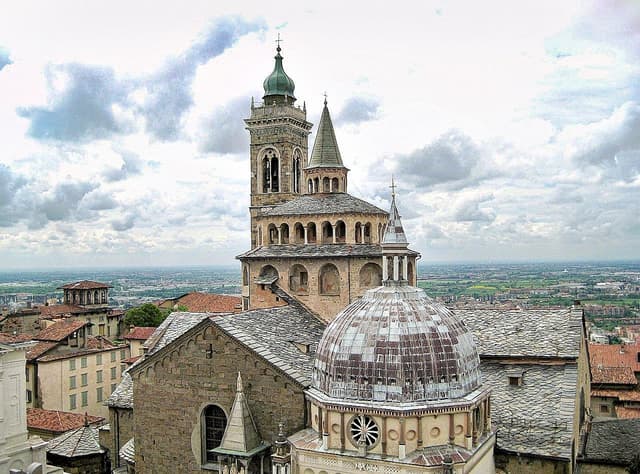
Basilica di Santa Maria Maggiore
@vikollia
According to popular tradition, supported by some documents, the church was built in 1133 following a vow made by the citizens of Bergamo to the Virgin Mary for protection from the plague ravaging northern Italy. The church opens onto Piazza Duomo from its left side, as the main façade has no entrance due to its former connection to the Bishops' Palace. Its exterior largely preserves its Lombard Romanesque style. Access is through two entrances: one by Giovanni da Campione (1353) and another by Isabello's Porta della Fontana. The main apse features a loggia with geometric and vegetal friezes and blind arcades with semi-columns. Most capitals are decorated with vegetal designs, except one adorned with Angels and Last Judgement Trumpets. The apses of the transept mirror the design of the main apse. Inside, the church retains its original Romanesque Greek cross layout, with a nave and two aisles ending in an apse, though most of the decoration comes from a 17th-century Baroque renovation.

Details
The interior of the church is truly among the most impressive I’ve ever seen. After purchasing your ticket, you can take your time exploring and appreciating the artwork, whether you choose to sit, walk, or simply soak in the beauty.
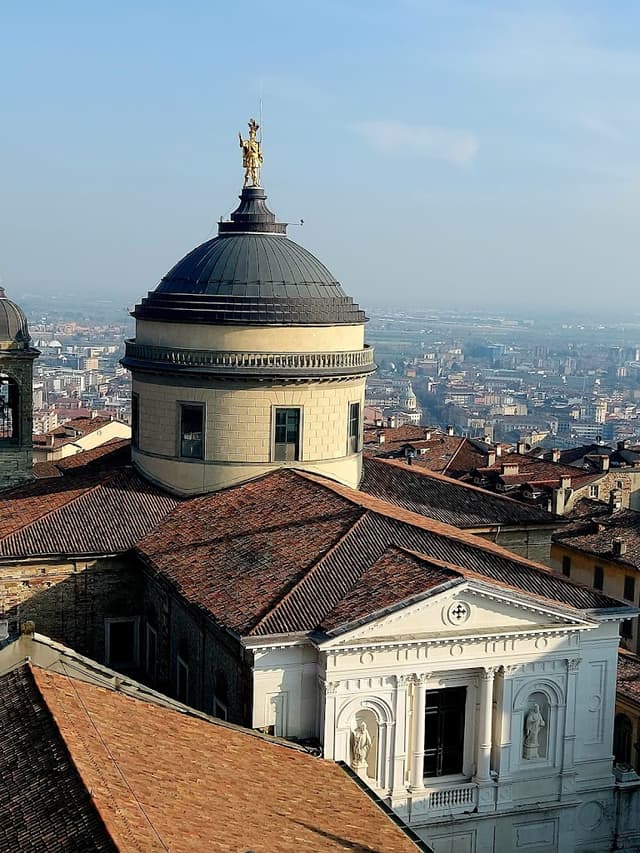
Bergamo Cathedral
@vikollia
By the 9th century, Bergamo had two cathedrals: one dedicated to Saint Alexander, believed to be built on the site of his martyrdom, and the other to Saint Vincent, constructed during the Lombard era on the site of the present cathedral. In the mid-15th century, Bishop Giovanni Barozzi commissioned the reconstruction of St. Vincent’s Cathedral, with plans credited to Filarete. The cathedral has a Latin cross layout with a single nave.
The first right-side chapel houses St. Benedict and Saints by Andrea Previtali (1524), while the first left-side chapel contains Madonna and Child with Saints by Giovan Battista Moroni (1576). Other notable works include Madonna with Child and Two Doves by Giovanni Cariani, and canvases attributed to Giambettino Cignaroli and Sebastiano Ricci, including Saints Firmus, Rusticus, and Proculus (1704). The apse features Martyrdom of Bishop Saint John of Bergamo (1731-1743) by Giovanni Battista Tiepolo and Saint Alexander by Carlo Innocenzo Carloni. The main altar was designed by Filippo Juvarra, with wooden intaglio panels in the choir by Johann Karl Sanz.

Details
Battistero
@vikollia
The baptistery, enclosed by a 19th-century gate, features an octagonal design. It sits on a 17th-century dark marble base, above which are 14th-century columns made of red Verona and red Musso marble, crafted by Campione’s workshop.

Details
VIII. La Marianna
Take a walk to the La Marianna, a truly iconic spot renowned for its rich history.
La Marianna
@vikollia
La Marianna in Bergamo is a historic café and gelateria, renowned as the birthplace of stracciatella ice cream. In 1953, the café was purchased by Oriana and Enrico Panattoni, a couple from Tuscany. Enrico Panattoni invented stracciatella ice cream in 1961, drawing inspiration from the traditional Italian stracciatella soup, where beaten eggs are drizzled into broth. He mimicked this technique by drizzling melted chocolate into milk-based ice cream, which hardened and shattered into delicate shreds, creating the ice cream's signature texture. La Marianna still serves this iconic flavour, preserving its traditional recipe.

Details
IX. Get lost!
After visiting the main attractions in Città Alta, the best way to truly experience the city is to wander aimlessly through its charming, narrow streets. Take time to admire the buildings and soak in the atmosphere. Here are two streets I particularly enjoyed:
Via Bartolomeo Colleoni
@vikollia
Just a short stroll from Piazza Duomo is another charming street worth exploring. Narrow and lined with delightful restaurants and local shops, it offers a quintessential taste of Bergamo’s vibrant atmosphere.

Details
Via San Giacomo
@vikollia
This street will eventually lead you back to the Venetian walls, providing a scenic route to conclude your visit to the Upper Town.

Details
5. The Lower Town
As you make your way back to the Lower Town, here are some suggestions for exploring it. Keep in mind that it requires covering more ground compared to the Upper Town, so be prepared for a bit more walking.
I. Sentierone
Sentierone
@vikollia
The Sentierone stands as one of Bergamo's most iconic avenues, a prominent landmark in the lower city. It is flanked by various commercial establishments and notable sites, including the Gaetano Donizetti Theatre on nearby Largo Gianandrea Gavazzeni, and the Church of Saints Bartolomeo and Stefano.

Details
II. Chiesa dei Santi Bartolomeo e Stefano
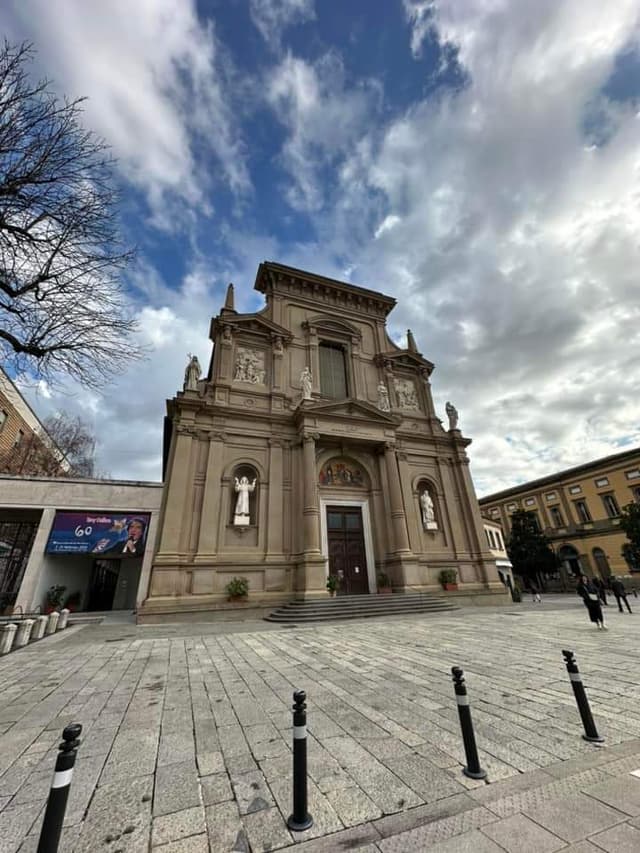
Chiesa dei Santi Bartolomeo e Stefano
@vikollia
The church, positioned at the end of the Sentierone where it meets Via Tasso, boasts a neoclassical façade designed by Giovanni Cuminetti in 1897. The two-tiered façade is divided by a moulded string course, with a central entrance framed by a pronaos of two Ionic columns supporting a tympanum. Above the door, a lunette fresco by Luigi Galizzi depicts Mary presenting the Rosary to Saint Dominic alongside Saint Catherine of Siena.
Inside, the church features a single nave flanked by five chapels on each side. The elevated presbytery culminates in an apse housing a wooden choir, semi-octagonal in design, which frames Lorenzo Lotto's grand altarpiece. The ceiling, frescoed in 1749 by Venetian artist Mattia Bortoloni and completed after his death by Gaspare Diziani, portrays the Dominican Heaven. This artwork illustrates Saint Dominic's ascent to the Holy Trinity, alongside scenes of the Sacrifice of Isaac and the Glory of the Blessed Sacrament, creating an illusion of height and depth, seamlessly blending with the painted vaults.

Details
III. Palazzo della Provincia
Palazzo della Provincia
@vikollia
The Renaissance-style building, dating back to the 19th century, is the first public structure erected in Bergamo following the establishment of the Kingdom of Italy. It now serves as the seat of the province and the prefecture. Both the building and its surrounding gardens are home to various works of art, showcasing the rich history of the city and its artists.

Details
IV. Palazzo della Liberta
Palazzo della Libertà
@vikollia
The monumental structure is closely integrated with the square. Its parallelepiped form, entirely clad in Zandobbio marble, features 21-meter-high façades and a width of 50 meters, covering an area of 7,500 m². The main façade, facing the square, boasts a grand portico with twelve giant-order pillars supporting an architrave inscribed with the dedication: "To Antonio Locatelli, thrice awarded the Gold Medal, hero of the war and the revolution," along with the date "XVII year E.F." Each pillar is paired with a copper lamp. Above the central entrance is a balcony designed for public speeches, equipped with a movable copper podium. A large glass window, framed in stone, dominates the upper section of the façade, while the coffered ceiling of the pronaos is adorned with circular elements. The roof is entirely flat, reflecting a purist aesthetic.

Details
V. Piazza Dante Alighieri
Piazza Dante Alighieri
@vikollia
Piazza Dante is surrounded by key buildings from Bergamo's 20th-century development and holds deep historical significance. It was once the heart of the Sant'Alessandro fair, documented as early as 899. The fair grew over the centuries, and by 1591, it featured a space filled with booths and masonry structures centered around the Fountain of the Fair, or Trifone, designed by Giovan Battista Caniana.

Details
VI. Torre dei Caduti
Torre dei caduti
@vikollia
The 45-meter-high square-shaped monument, designed by architect Marcello Piacentini, was constructed beginning in 1922 on the Prato di Sant'Alessandro, the site of the historic Sant'Alessandro fair, one of Lombardy's oldest, dating back to the 9th century. Built with Bagnatica sandstone in crespone ashlars, the monument exudes a strong, imposing structure, softened by ornamental and commemorative elements such as the clock and various sculptural groups.

Details
VII. Chiostro di Santa Marta
Chiostro di Santa Marta
@vikollia
The Church of Santa Marta and its adjoining cloister were once part of the cloistered Dominican monastery in Bergamo, which was suppressed in 1798 during the Napoleonic era. Today, the cloister is the only remaining part, hidden among the modern bank buildings in the Galleria Crispi of the lower city. Often overlooked by hurried passersby, the cloister occasionally comes to life as a venue for concerts and exhibitions.
Preserved in its original 15th-century layout, the cloister evokes the serene atmosphere typical of ancient prayer spaces. It remains one of the few places in Bergamo to maintain its authentic architectural composition. The cloister's two-level design, with its rhythmic play of light and shadow, echoes the loggias of the Seriana Valley, featuring wide porticoes on the ground floor and a double number of arches on the upper floor.

Details
VIII. Basilica di Sant'Alessandro in Colonna
Basilica of St. Alexander in Column
@vikollia
The church is elevated above Via Sant'Alessandro by a short staircase leading to a churchyard with sandstone paving. Its neoclassical façade, crafted from Botticino marble, is divided into two orders by a serrated cornice, with four vertical sections marked by pilasters resting on bases and capped with Corinthian capitals. The lower order houses the entrances, with the central one being the largest, adorned with marble brackets supporting an arched tympanum. On either side are secondary entrances framed by stone pilasters that hold triangular pediments. The upper order mirrors the pilasters below and features a large central window with a stone frame and moulded cornice to illuminate the interior. Flanking the window are niches containing statues of saints. Above, the pilasters support a grand triangular tympanum, crowned by three statues of saints.

Details
IX. Piazza Pondita
Piazza Pontida
@vikollia
The square is the oldest commercial point in Bergamo and was called Piazza della Legna. Every morning, farmers who lived outside the city would arrive on the square to sell their products: herbs and fruit. Houses with porticos from the 15th century are located on three sides. The large porticoed building then continues onto Largo Nicolò Rezzara.

Details
X. Chiesa di San Leonardo
Saint Leonardo
@vikollia
The façade is articulated by pilasters that span the front, further divided into two orders by a string course. The lower order features a 14th-century portal, a rose window, and two arched openings from the 15th century, though these are 20th-century reconstructions and do not correspond to the interior layout. The upper section retains its 18th-century design, with a large splayed window adorned by two putti at the top and flanked by niches containing statues of San Leonardo and San Gerolamo. The façade is crowned by a triangular pediment topped with an iron cross, while the bell tower stands along Via XX Settembre.

Details
6. Conclusion
I would like to thank you for reading this guide through Bergamo. I tried my best to give you the most interesting experience. If you happen to follow this article in Bergamo, please reach out to me on Instagram or via e-mail and let me know what you thought, as well as any opinion on what I should add here to make it an even better experience.
E-mail: vvikollia@wp.pl
You can also find me on TikTok:
Kisses,
-Wiktoria
* * *
